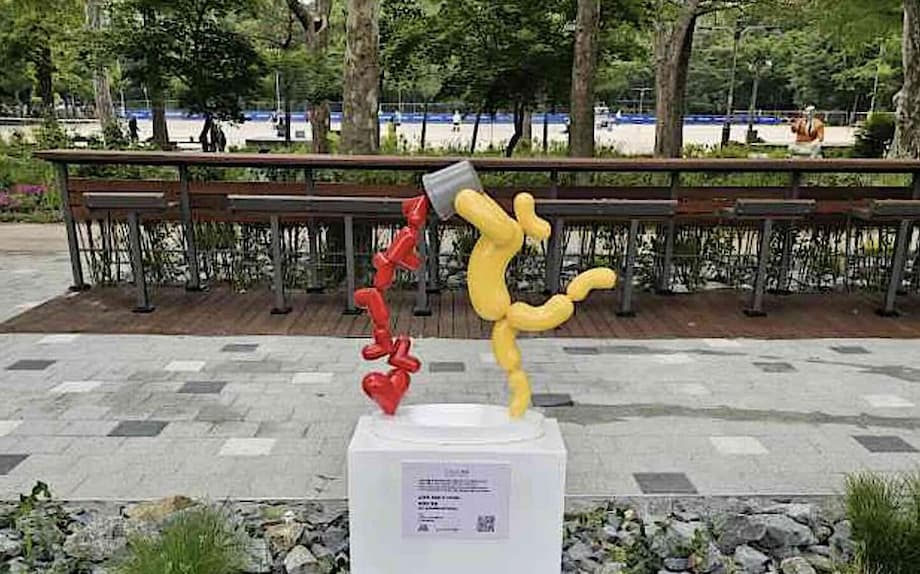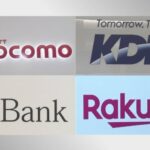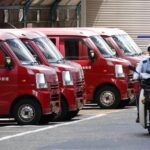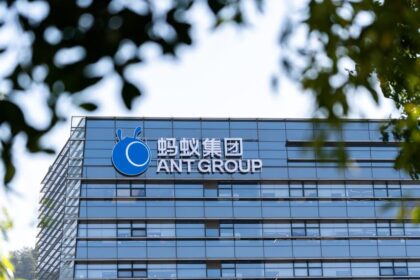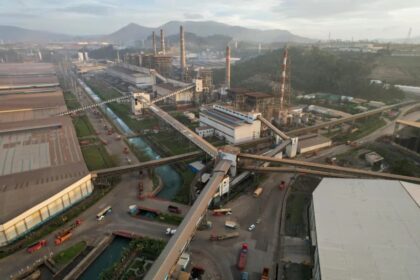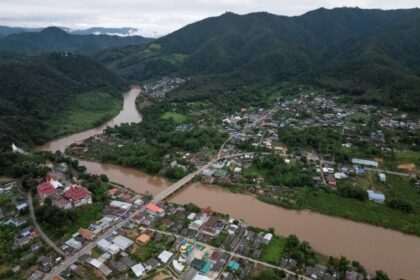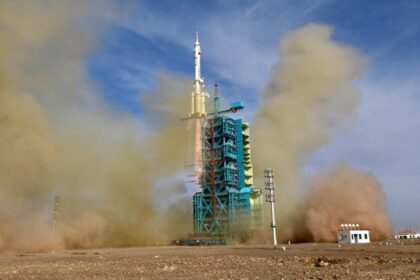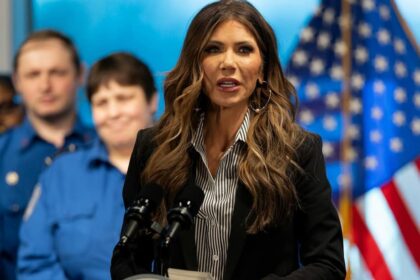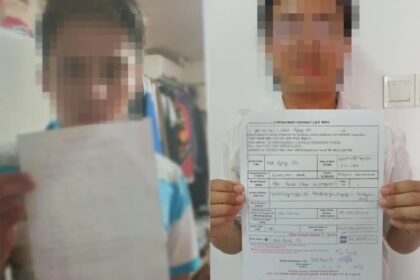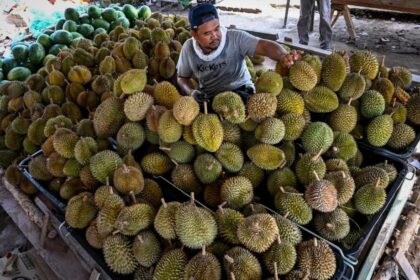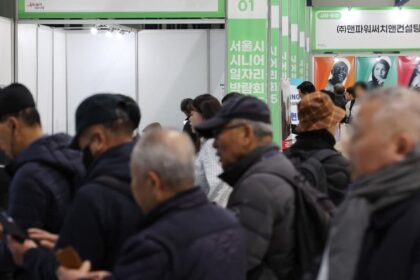Art takes over Seoul’s parks and riverfronts
From September 1 to November 30, 2025, the Seoul Sculpture Festival turns the capital into an expansive open air gallery where commuters, joggers, families, and visitors encounter more than 100 sculptures woven into daily life. Anchored at Ttukseom Hangang Park and spread across ten sites, the second edition brings large works, interactive pieces, and curated showcases to the riverfront and major green spaces. The festival sits at the heart of a packed art season that includes Seoul Art Week, Frieze Seoul, and Kiaf Seoul, underscoring the city’s growing pull for international artists, curators, and collectors.
- Art takes over Seoul’s parks and riverfronts
- Where and when to see the sculptures
- The Seoul Sculpture Award and public voting
- Curated showcases spotlight leading Korean sculptors
- Programs for families, students, and first time visitors
- Part of a larger art season across Seoul
- Earlier programming hints at a year round presence
- Why public art matters in a crowded megacity
- How the festival fits into the Korean art market
- Practical tips for planning your visit
- How to follow the broader art week
- What to Know
What sets this event apart is its mix of public participation and expert curation. The Seoul Sculpture Award returns with 14 finalist works selected through an international open call, with residents able to scan a QR code at the sites to cast votes that combine with expert evaluations. At the same time, a curated exhibition presents 22 works by leading Korean sculptors. Add in a slate of hands on programs, talk events, busking performances, and a collaborative installation built with citizen messages, and the result is a festival that blends serious sculpture with a festival atmosphere across the city.
Where and when to see the sculptures
The main exhibition opens at Ttukseom Hangang Park, one of the city’s most visited riverfront areas, then extends to nine other locations so that art appears in the flow of everyday routines. Works are installed at parks and public spaces including Seoul Botanic Park, Boramae Park, and Dream Forest. The installations are designed for outdoor viewing, with many positioned along pedestrian routes and near plazas where people naturally gather. The format encourages unplanned encounters as well as intentional visits.
The city has added parallel programs that spread the footprint even wider. Seoul Sculpture+, running alongside the main festival, introduces works by 60 artists at ten additional sites, while the One Pyeong Sculpture Museum project uses small pockets of urban space for compact installations that invite close looking. These satellite programs ensure that neighborhoods far from the river also get an infusion of art. The schedule is built to reward repeat visits, since works can be experienced by day and by night as the city’s light changes across the season.
The Seoul Sculpture Award and public voting
The Seoul Sculpture Award is a focal point of the festival. Fourteen finalists, chosen through an international open call that drew 98 artists, present works that range from abstract experiments with scale to figurative pieces that reference Korean history and contemporary life. Visitors can scan QR codes near each work to register a vote. Those citizen votes are then combined with a panel review to select the grand prize. The winning work is slated for a three year display at Noeul Park, one of the parks in the World Cup Park complex in Mapo District, giving the project a lasting presence beyond the fall season.
Public voting is more than a novelty. It is a way to connect people who might not visit a gallery to the process of recognizing new sculpture. Outdoor competitions often test artists in ways that gallery shows do not. Materials must withstand weather. Scale must suit a broad space. Works need to read clearly at a distance yet reward close attention. Combining public voting with expert insight helps balance those demands, highlighting art that resonates on site and meets professional standards for design and fabrication.
Curated showcases spotlight leading Korean sculptors
Alongside the competition, a curated exhibition of 22 works introduces the wider lineage of contemporary Korean sculpture. Among the featured artists is Kim Young won, celebrated for the King Sejong statue at Gwanghwamun Square, and Han Jin seop, the first Asian artist to install a sculpture in St. Peter’s Basilica. Their inclusion places the festival’s experimental works in dialogue with creators whose practices are already part of the national landscape. The result is a cross section of approaches, from minimalist forms to narrative works that draw on craft traditions.
Collaboration with the Korean Sculptors Association and other private partners expands the reach of the program. Public institutions shape the logistics and access, while artist networks help with selection and mentorship. For viewers, this combination means exposure to seasoned voices and younger artists who test boundaries. It also locates the event within a broader support system for sculpture in Korea, linking workshops, academic programs, and city initiatives with the experience of walking among artworks in parks.
Programs for families, students, and first time visitors
The festival is designed to be participatory, not just observational. Families will find hands on studios, and students can tap into guided sessions that build skills step by step. The lineup avoids one size fits all programming in favor of layered entry points for different ages and interests.
Hands on workshops and the Sculpture Playground
Sculpture Playground turns a section of the park into a safe space for young visitors to build and move around invented forms. Simple materials and clear prompts encourage experimentation. Separate sessions under the title Becoming a Sculptor give teens and adults a more focused path. Participants learn about structure, balance, and materials, then apply those ideas to make small pieces they can take home. These workshops support understanding of how large public works are conceived and constructed.
Audio commentary by a familiar voice
Veteran actress Go Doo shim, who serves as an honorary mayor of Seoul, has recorded audio commentary for selected works. The tracks help first time visitors slow down and notice details in fabrication, placement, and theme. For visitors who might be new to sculpture, the audio guide provides an accessible introduction that does not overwhelm with jargon.
Busking and talk events
Daily busking performances add a musical backdrop to evening strolls, while the Sculpture Talk Concert brings artists and critics into conversation. These talks probe materials, site selection, and the role of public art in a dense city. Artists explain choices, and critics place those choices within local and global conversations about contemporary sculpture.
Part of a larger art season across Seoul
The festival coincides with Seoul Art Week 2025, a city program that from September 1 to 7 links major art events and museums into a weeklong focus on cultural life. The Seoul Metropolitan Government has detailed over 100 exhibitions and programs involving 107 museums and galleries, with anchor events that include the Seoul Sculpture Festival, Frieze Seoul, Kiaf Seoul, the Seoul Mediacity Biennale, and Seoul Light DDP 2025 Autumn. During the week, VIP itineraries bring international guests to city run artist residencies, while a stamp tour across 85 venues encourages residents to explore exhibitions in their neighborhoods.
At COEX, Frieze Seoul hosts more than 120 exhibitors and Kiaf presents 175 galleries from 20 countries. These fairs attract collectors and curators, yet their presence also raises the visibility of public events that do not require a ticket. DDP transforms into a nighttime spectacle with large media facades, while the Mediacity Biennale spreads moving image and installation projects across multiple venues. By staging the sculpture festival in parallel, the city ties high profile fairs to accessible outdoor programming that meets people where they live, commute, and relax.
Earlier programming hints at a year round presence
Seoul’s push to bring art into everyday environments has not been limited to autumn. In the spring and summer, the city programmed display events across downtown, from Seoul Plaza to river parks. One strand saw a sculpture showcase at Baekje Culture Park in Songpa District from May 23 to August 12, integrating art with seasonal walks and outdoor concerts. The approach builds continuity from spring through late fall, and it introduces the idea that public art can be a recurring part of how the city uses open space.
These interlocking efforts help new audiences discover sculpture without entering formal galleries. A passerby who sees a piece in May can later encounter the festival’s competition works in September, then return to a neighborhood exhibition under the Seoul Sculpture+ banner. The frequency of contact matters in a city where schedules are tight and distances can feel long.
Why public art matters in a crowded megacity
Public sculpture changes how a park or riverfront feels and functions. It gives people a reason to pause, and it can transform a routine jog into a small discovery. Large works anchor vistas. Smaller interventions invite close looking and conversation. When pieces are sited in plazas and along paths, they can draw foot traffic to nearby amenities and encourage people to explore a park more fully.
There is also a social effect. Families engage with works together, teachers bring students for discussion, and commuters stop to scan a QR code to vote. Public art becomes a shared reference point. Accessibility is part of the impact. Works are free to view, placed in areas many people already visit, and presented with clear signage and optional audio commentary. Over time, such touchpoints can build confidence to explore galleries and museums elsewhere in the city.
How the festival fits into the Korean art market
The festival arrives during a busy period for Korea’s art scene. Across September, a nationwide Korea Art Festival offers discounted tickets to major biennales and fairs and promotes emerging artists through special exhibitions. The Ministry of Culture, Sports and Tourism and the Korea Arts Management Service have coordinated efforts so that more people can visit major shows at lower cost, with discounted bundles that combine rail travel and tickets to events such as the Cheongju Craft Biennale and the Gwangju Design Biennale. Airports host joint exhibitions that present Korean art to travelers, and an international conference links curators, critics, and collectors in conversations about the country’s role in the global art world.
At the same time, the market context remains complex. Recent reporting has described a contraction in art sales in Korea and shifting dynamics across Asia as fairs in other countries compete for attention. Major galleries still see promise in Seoul. New initiatives, museum expansions, and plans for large cultural facilities add momentum. The sculpture festival operates in a different register than the market driven fairs at COEX. By bringing art to parks and public spaces, it builds audience breadth and long term interest that can benefit institutions and artists well beyond a single sales cycle.
Officials frame the nationwide push in civic terms as well as artistic ones. Speaking on the Korea Art Festival, Culture Minister Chae Hwi young described the goal of linking artists and the public more closely.
Chae Hwi young, Minister of Culture, Sports and Tourism, said, “The Korea Art Festival will go beyond a simple exhibition space to become a powerful starting point for Korean arts to breathe together with the people and communicate with the world.”
Practical tips for planning your visit
The main clusters are easy to reach by subway. Ttukseom Hangang Park is served by Ttukseom Resort Station on Line 7. Boramae Park connects to Line 7 and Line 2, while Seoul Botanic Park is near Magongnaru Station on Line 9 and the Airport Railroad. Dream Forest is reachable from Mia Sageori or Dolgoji Stations with a short bus ride. Weekends can be crowded at riverfront parks, so early mornings and late afternoons often provide the most comfortable viewing hours. Sunrise and pre dusk light also reveal texture and surface in ways that midday glare can flatten.
Use on site signage to find QR codes for the Seoul Sculpture Award votes. If you want to plan ahead, check the city’s official event pages and the Smart Seoul Map for current site lists and updates. During Seoul Art Week, consider combining sculpture visits with museum shows and the media facade program at DDP. If you plan an evening visit to Ttukseom, look for scheduled drone light shows and seasonal night events that turn the river into a stage. Bring water, sunscreen, and a hat on warm days. Some works invite sitting or walking through an element of the sculpture, so comfortable shoes will help.
Public art is for everyone, but be mindful of safety and respect. Do not climb on works unless signage says interaction is allowed. Keep a safe distance during busking and talk events so that performers and speakers can work with minimal interference. If you visit with children, the Sculpture Playground provides a space designed for active play, while the main installations require more care.
How to follow the broader art week
Seoul Art Week centralizes information across the fairs and city programs. It runs from September 1 to 7 with exhibitions and activities spread across 107 museums and galleries. The city’s stamp tour program rewards visits to at least five venues with small souvenirs, a helpful nudge to explore beyond the usual districts. VIP programs aligned with Frieze Seoul and Kiaf Seoul open studio doors at public residencies, a rare chance to see work in progress. For schedules and maps, consult the Seoul Metropolitan Government’s English site and official channels, then confirm details with individual venues, since some programs require reservations or timed entry.
Frieze and Kiaf are ticketed, while the sculpture festival is free. Pairing a day at COEX with an evening walk by the river makes for a balanced experience that mixes market driven displays with public installations. Visitors focused on media and design can add the Mediacity Biennale and the night shows at DDP to round out a full itinerary.
What to Know
- Dates: Seoul Sculpture Festival runs September 1 to November 30, 2025, with installations anchored at Ttukseom Hangang Park and spread across ten public sites.
- Scale: More than 100 works present outdoor sculpture across parks and riverfronts, with additional pieces via Seoul Sculpture+ and One Pyeong Sculpture Museum.
- Award: Fourteen finalists compete for the Seoul Sculpture Award, chosen through an international call. Public QR code voting is combined with expert review.
- Legacy: The grand prize winner is scheduled for a three year display at Noeul Park in the World Cup Park complex.
- Artists: A curated exhibition features 22 works by leading Korean sculptors, including Kim Young won and Han Jin seop.
- Programs: Expect hands on workshops, a Sculpture Playground, a talk concert, daily busking, and audio commentary by actress and honorary mayor Go Doo shim.
- Context: The festival coincides with Seoul Art Week, Frieze Seoul, and Kiaf Seoul, plus citywide programs at museums and DDP.
- Access: Installations are free to view and reachable by subway and bus. Check official pages and the Smart Seoul Map for updates.


